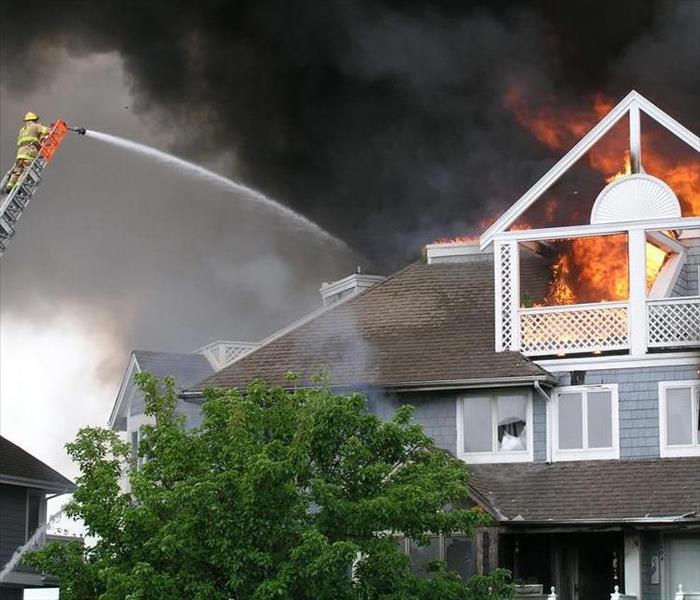Designing a Fire Escape Plan
1/7/2022 (Permalink)
What comes to mind when you consider the biggest threats to family safety? For many parents, they think beyond the immediate or likely threats to assess the potential of rarer occurrences, like floods and fires, making a disaster or fire escape plan critical to family safety.
Despite the recognition for an escape plan, many parents and homeowners are uncertain of the particulars of such a plan or how to implement it. While you can contact the local fire department or a restoration service in Emporia, VA for help, there are several characteristics a plan should incorporate, including.
- Multiple exits
- Clear pathways
- Meeting points outside of the home
The Importance of a Fire Escape Plan
Fires are among the most dangerous home disasters, and they typically occur without warning. A frayed wire, unmanaged stove, clogged dryer vent, etc., can lead to rapid-moving fires, and most people would argue the fires happen when everything seems fine.
A practices emergency escape plan is the key to survival in these unprecedented moments. A fire might not allow time for a parent to get to each child, which means every family member is responsible for their safety unless incapable.
While a lot of thought goes into designing an effective escape plan, there are two critical components: practical exits and practice.
Planning Practical Exits
As you walk through your home in an attempt to design the perfect exit strategy for your family, take note of the pre-established exits in every room. Bedrooms have at least two exits: the door and a window.
You want to acknowledge and record a minimum of two exits per space and how those exits fit into other exits throughout the house. You never know where you will be when a disaster occurs, so knowing the available exits and routes through your home is crucial in a disaster.
Each exit should connect to a path that leads safely outside and to a meeting place. The meeting place is crucial because it is how you will keep tabs on your family.
Practicing To Perfect It
Creating a plan is not enough. If you want a plan to be actionable and effective, your family must practice it.
It is best to aim for a minimum of one practice day per six months, but you can opt for more. If you have young children, it is probably better to practice several times throughout the year. A monthly practice might even be suitable depending on the ages of your family members.
The frequent practice ensures that all family members know what to do in an emergency. Building familiarity around escape routes is crucial, so no one freezes during a disaster. Indecision is one of the worst things that can happen in a fire.
A fire escape plan is vital to family safety. While no one dreams of their home catching fire, it is better to be prepared than surprised. Your local fire department or fire mitigation service can help you design a plan for your house. While there are general principles every homeowner should follow, escape routes are highly individual.




 24/7 Emergency Service
24/7 Emergency Service
